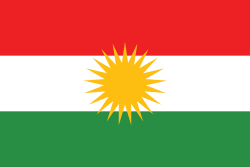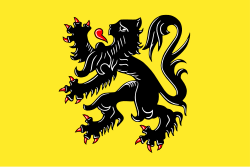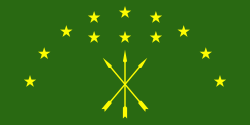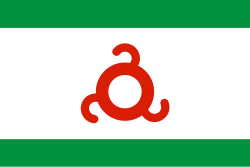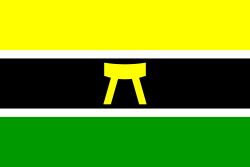Etnická vlajka
Etnická vlajka je symbolem národa, který nemá vlastní stát. Tyto vlajky používají národnostní menšiny, etnika žijící rozptýleně po světě nebo domorodci, kteří nevytvořili státní útvary. Nejstarší z nich je baskická vlajka, vytvořená v roce 1894. Pojem zahrnuje jak politické vlajky, které vyjadřují snahu o vytvoření vlastního státu, tak kulturní vlajky, zastupující jazykové skupiny s několika stovkami příslušníků, jako Livonci. Etnické vlajky zpravidla nemají oficiální charakter, ale v některých zemích se vyvěšují při slavnostních příležitostech spolu se státní vlajkou na důkaz péče státu o menšiny (např. Sámská vlajka v Norsku).
Evropa
- (c) Daniele Schirmo aka Frankie688, CC BY-SA 2.5
- Ladinové
- Meschetští Turci (zřejmě fiktivní vlajka)
Asie
- Acehové
- Kašmířané
- Paštuni
Afrika
- Bubiové
- Eweové
Amerika
- Quebečané
Austrálie a Oceánie
- Markézané
Odkazy
Reference
V tomto článku byl použit překlad textu z článku Drapeau ethnique na francouzské Wikipedii.
Externí odkazy
 Obrázky, zvuky či videa k tématu etnická vlajka na Wikimedia Commons
Obrázky, zvuky či videa k tématu etnická vlajka na Wikimedia Commons
Média použitá na této stránce
Sámská vlajka
Flag of the Druze people
Autor: Tom Lemmens, Licence: CC0
Flag of Flanders (Belgium), the region and community.
"Kokbayraq" flag, used by the Uyghurs as a symbol of the East Turkestan independence movement. The Chinese government prohibits using the flag within China.
Vlajka indiánskeho národa Čerokí, obsahujúca jeho pečať
Regional flag of Silesia
Prapor s moderní verzí historického znaku Moravy.
Flag of Hunza
Mapuche flag called Wenufoye, created in 1992 by the indigenous organization called Council of All Lands.
Flag of the province Sudetenland since 1919
Autor: 燃灯, Licence: CC BY-SA 4.0
Autor: GwenofGwened, Licence: CC BY-SA 4.0
Gwenn ha Du à 11 mouchetures d'hermine (version moderne)
The Tino Rangatiratanga Flag of the Maori sovereignty movement. Recognised as the national Maori flag of New Zealand by the NZ Cabinet in 2009.[1]
Flag of the Arapaho Nation, Wyoming, USA
Autor: Frédéric Rodrigo, Licence: GPL
Flag of the Syriac-Aramean people
Flag of the Aromanians, according to Eurominority.com: [2]. See [3] for background.
Flag of the Northern Cheyenne Tribe
Autor: Original image by J. Ollé, current vector version by Editor at Large, Licence: CC BY-SA 3.0
Flag of Pakhtunistan from 1948-86
Flag of Quebec.
Autor: Jayarathina, Licence: CC BY-SA 4.0
The Meskhetian national flag. The flag of the national movement of the Meskhetian Turks. Horizontal tricolor of white, green and black bearing a verticl red strip at the hoist charged with a white crescent moon
Afrikaner Vryheidsvlag or Freedom flag (also known as the Strydvlag or Struggle flag). Registered in 1995 with the South African Bureau of Heraldry as the flag of the Afrikaner Volksfront, also as a representation of Afrikaners as an ethnic group on UNPO.
Flag of Inuit people (unofficial)
The flag of the Republic of Ingushetia. The first-uploaded version was drawn by Mysid in CorelDRAW and uploaded to en.wikipedia on December 5, 2005
Autor: unknown, Licence: CC BY-SA 2.5
Flag of Maasai national movement. "Nations Without States" (James Minahan, 1996) describes a flag purportedly of the Maasai national movement. It is red with a black and white Maasai shield in the center, and white, crossed spears behind the shield.
Flag of Szekler Land (as used by the Szekler National Council)
Autor: Derivative work by Super Dromaeosaurus since Fjana at DeviantArt, Licence: CC BY-SA 3.0
Flag of the Lipovans, a Russian minority mostly living in Dobruja, in Romania
Autor: Initial version by Hosmich, updated version by Argean, Licence: CC0
Σημαία των Ποντίων
“Berber flag”. Originally created by the Berber Academy (Agraw Imazighen) in the 70s, the flag was adopted in 1998 flag of the Berber people by the Amazigh World Congress (CMA, Agraw Amadlan Amazigh). The “ⵣ” symbol is a Tifinagh letter called "yaz" and pronounced [z].
Autor: YoungstownToast, Licence: CC BY-SA 4.0
The flag of the Rusyns (Q140420), as approved by the World Congress of Rusyns (Q8035572) on 23 June 2007.
The red, black and green flag was created by the members of the Universal Negro Improvement Association and African Communities League at their convention held in Madison Square Garden on August 13, 1920.
Flag of Livonian people. Flag description: http://www.livones.net/en/libiesi/simboli/the-flag
Míkmaq State flag (Canada)
Autor: D. Richfield, Licence: CC BY-SA 3.0
This is the tribal flag of the w:Bubi people, an indigenous group mainly present on Bioko island, Equatorial Guinea. Lead by the "Movimiento para la Autodeterminación de la Isla de Bioko" (Movement for the Self-Determination of Bioko Island), this group strives for the political solidarity of the dominant Bubi population of Bioko Island, and towards its original request, under its former name Union Bubi. The flag represents all individuals of Bubi heritage. This includes Los Fernandinos, expatriates, those in exile, refugees, those of bi- or multi-racial heritage, as well as those of multi-ethnic ancestry.
Flag of the German-speaking Community of Belgium, SVG version of File:BE DG Fahne randlos.png. Note: by Decree, the official flag has the same ratio as the Belgian national flag (13:15), but the 2:3 version is used almost exclusively instead, similar to the Belgian national flag.
Flag of the Oromo Liberation Front (OLF)
(c) Daniele Schirmo aka Frankie688, CC BY-SA 2.5
Flag of the autonomous region of the Basque Country
- A white cross over a green saltire on a red field.
In 1965, Thomas J. Arceneaux of Lafayette Louisiana, former dean of Agriculture at the University of Southwestern Louisiana designed the Louisiana Acadian flag. A description of this flag follows:
- To symbolize the French heritage and origin of the Acadians there are three silver fleur-des-lis on a blue background. To symbolize Spain, who governed Louisiana for 40 years and was in possession of the Louisiana territory when the Acadians arrived, the old arms of the Castille, a gold tower on a red field. The gold star on a white field represents “Our Lady of the Assumption”, Patroness of the Acadians. The star also symbolizes the active participation of the Acadians in the American Revolution, as soldiers under Galvez.
(Don Landry, 7 October 1997, crwflags.com) It was adopted in 1965 by the Comité acadien and in 1972 by the Louisiana state.
(Luc-vartan Baronian, 21 January 1998)Autor: Andrew Mercer (www.baldwhiteguy.co.nz), Licence: CC BY-SA 4.0
Anti-Racism Protest in Brisbane, Queensland, Australia. 6 June 2020. This protest was in support of Black Lives Matter and associated protests in the United States following the killing of George Floyd - but also highlighted parallel issues within Australia such as the deaths of Australia's aboriginal people while in police custody. The two flags represent the Australian aboriginal people, and the New Zealand Maori people respectively.






























































